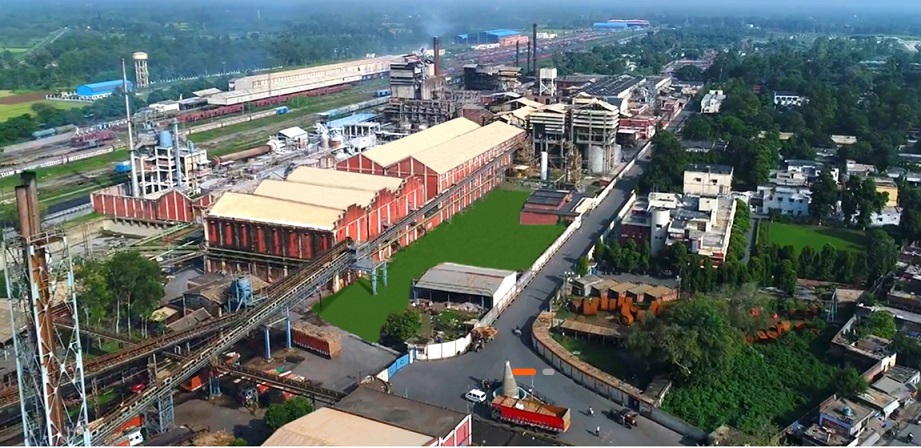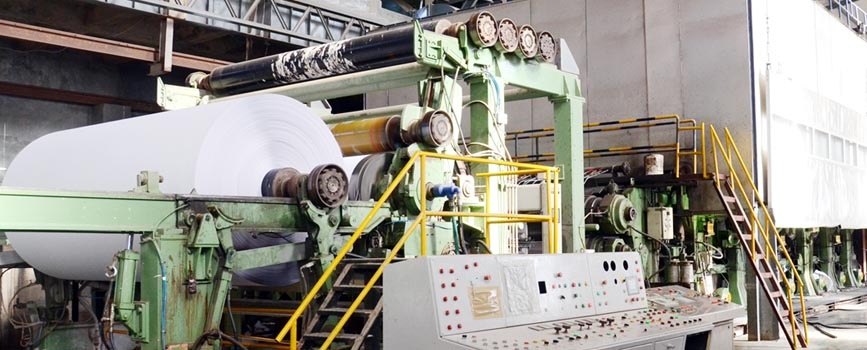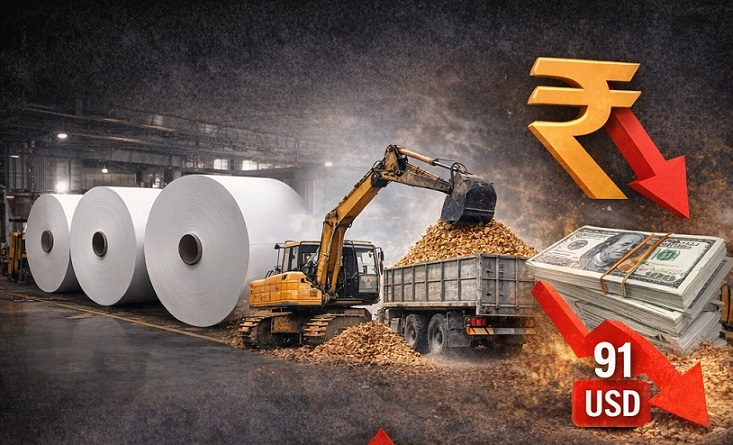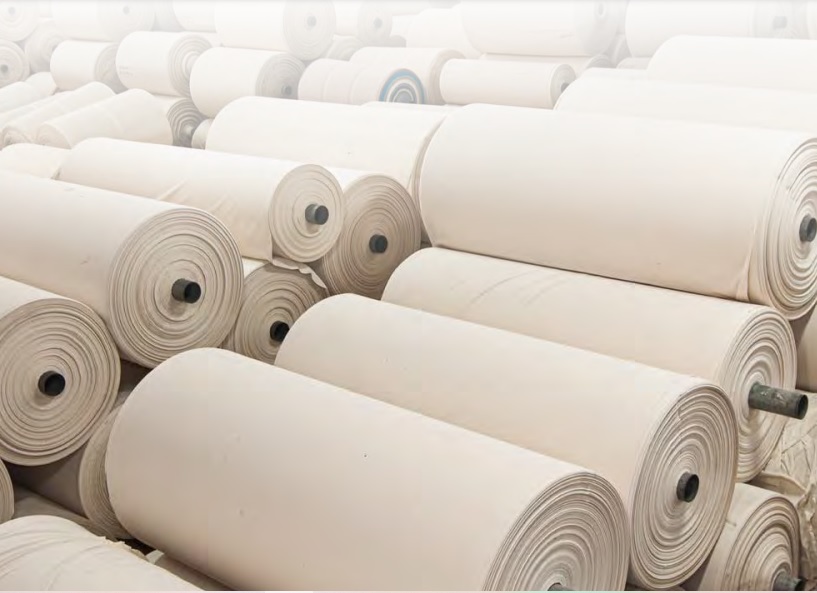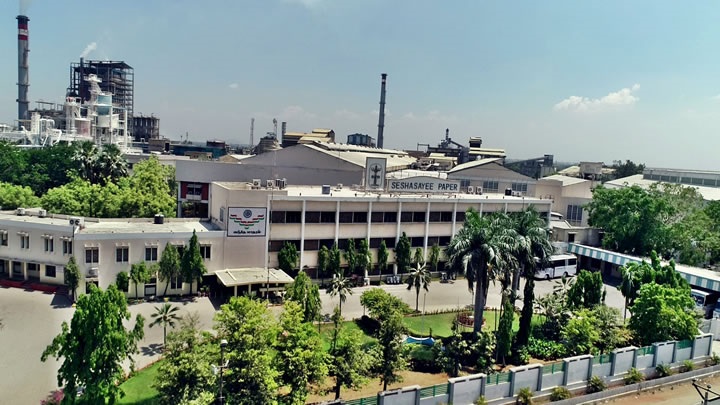Prices will fall for most grades of commodity paper due to subdued market conditions


Prices will fall for most grades of commodity paper due to subdued market conditions
New Delhi | 9th May 2020 | The Pulp and Paper Times:
Buy Latest Indian Paper Mills Directory, Avail 38% discount and Get your copy in just Rs.2728 only (Click here)
In the second week of December 2019, when the world was still unaware of Covid-19 Moody's in their outlook for the global paper and forest products industry in the coming year, remained negative. It continued with the negative rating in March 2020 as well. It was of the opinion that earnings from paper, paper packaging and market pulp will all decline primarily as excess supply causes prices to fall and expected operating earnings for the global paper and forest products industry to decline by 5-7% over the next 12-18 months.

Coronavirus will pressure demand and drive prices lower. The global economic outlook is deteriorating as the outbreak spreads. While logistics disruptions may temporarily slow paper and forest product exports to and from China and other affected areas, such as Korea and Italy, the impact on global demand will likely be far worse than on global production. This will result in oversupply across many regions, which will drive prices for most grades lower. Lower prices across most sub sectors will be the primary driver for lower earnings, as well as the on-going secular demand decline for paper, partially offset by lower costs for recycled fiber. E-commerce growth and environmental pressures to replace plastic packaging with paper-based alternatives will be partially offset by right-size packaging.
Consumers continue to turn to digital substitutes like electronic storage and e-books. Paper capacity reductions through mill/machine closures or conversions will likely fail to keep pace with demand declines, leading to lower prices for most paper grades. Demand for several specialty paper grades will increase as consumers switch to paper-based substitutes for single use plastics, such as cups and straws.
Global paper packaging and tissue subsector, operating earnings will decline by about 2% in 2020 on the back of lower corrugated container prices, given capacity additions haven't yet been absorbed by weaker demand growth. Consumer packaging and tissue prices will stay at current levels, while recycled fiber costs will remain below the long-term average.
Prices will fall for most grades of commodity paper, as curtailments have not kept pace with declining demand. Nevertheless, specialty and non-integrated commodity paper producers will benefit from lower pulp and recycled fiber costs.
It was of the view that market pulp producers will see operating earnings decline by around 9% in the coming year. Although pulp prices will begin to rise as inventory levels normalize, average prices in 2020 will remain below 2019 levels. Demand for pulp will remain muted as orders from particularly China slow down.
 3840 3840 |
8525 |
514 |
 2665 2665 |
The lockdown in China is also inflating corrugated container (OCC) prices within the country. OCC collections ceased during the quarantine – problematic because domestic OCC has become the primary supply base for China's recycled paper and board production amid strict contaminant regulations on OCC imports.
According to Bureau of International Recycling (BIR), the Solid Waste & Chemicals Management Centre of the Ministry of Ecology and Environment of the People's Republic of China published the 6th batch of waste import quotas for 2020 on April 23, 2020 allowing 124,080 tons of paper scrap to enter China. In line with changes to the Chinese government's import policy, the quantities of recovered paper entering the country has declined by 40% over the past three years. The aim is still to achieve zero recovered paper imports by the end of this year; the main method of bridging the gap left by lower imports is to process recovered paper into pulp outside of China before importing it. This stream is providing a particularly important supplement given the current shortage of domestic recovered paper and more limited imports.
According to Care Rating, Industry Report of March 30, 2020, the Indian paper and paper products industry is largely domestic focused, however, imports continue to account for more than 20% of the overall annual demand, and more than 55% of newsprint demand (primarily from Russia and Canada). Further, the industry imports significant levels of pulp and waste paper due to lower domestic availability.
Demand in the packaging paper & board segment is expected to remain ahead, while other segments are expected to either grow slowly or remain at similar levels.
In the beginning of 2020, even as coated paper prices increased due to slowdown in Chinese imports, other prices held steady. If the outbreak persists, the prices could increase further, however, global macro-economic headwinds and demand conditions would limit the upside.
Pulp prices had come off their highs and waste paper prices had declined further, however, pulp prices have already started to harden as the global trade has slowed. This in turn is expected to result in paper prices moving up. Cheaper Imports into India have also declined. Larger players maintain plantations and an ability to source raw materials efficiently; however, MSME companies could face raw material supply disruptions, impacting their ability to meet their supply contracts especially in the packaging material requirements.
Margins of the players are expected to be affected by subdued market conditions. Credit profiles of companies which have either high leverage or larger dependencies on the overseas market implying lower bargaining power (especially MSMEs) could weaken indicating larger working capital requirements and lower liquidity levels.
One important factor to think about is the rupee dollar parity. On January 01, 2020, rupee was around 71.30 to the US dollar. On April 22, 2020 the parity changed southwards to 76.50 to the US dollar, a depreciation of around 7.20 percent. If the situation deteriorates further the rupee dollar parity could further move southwards putting further pressure on the economy and the producer's sustainability.

Pulp & Paper Industry in India
Estimated Production in terms of raw material Used.
Waste/ Recycle fiber: 73 '%
Wood /Bamboo 18 '%
Agri residue (Baggase/Wheat) 9 '%
(Source: CPPRI)
Estimated domestic Production
Year 2018-19
Total Production : 18.603 Million Ton ( source: IPMA)
23.626 Million Ton (source: IPPTA)
According to IPMA , total imports and exports ,in Million Ton is as follows :
Imports Exports
Year 18-19 19-20 18-19 19-20
(Apr-Dec'19) (Apr-Dec'19)
Newsprint 1.37 1.05 0.47 0.37
Other Varieties 1.47 1.27 1.02 0.79
Total 2.84 2.32 1.49 1.16
With the news about Covid-19 changing almost hourly, the markets remain uncertain and difficult to predict. This is bound to get worse than it is today, because now outbreak is rapidly spreading outside of China. It spreads exceptionally fast, and the impact on the economy could be greater than we think.
We may have come out safe and healthy from the first wave, but there are still many more to come. Let us not get complacent and till then the lesson for everyone is to live with it and yet increase immunity, improve hygiene, maintain social distancing and implement other protective and precautionary steps to be safe and healthy.
- The views in this article are personnel, this article has been writing by Mr. Satpal Gupta, Former President FPTA and Managing Director of Narsingh Dass & Co. for The Pulp and Paper Times.
Narsingh Dass Group is a multifarious trading group, renowned and much admired in the paper industry. With its core business aimed to create an efficient flow of goods between manufacturers and consumers of paper, paperboard & related products, the group has risen consistently to be one of the most trusted business houses of its kind in India.

Web Title: Prices will fall for most grades of commodity paper due to subdued market conditions




 Join WhatsApp Group
Join WhatsApp Group Join Telegram Channel
Join Telegram Channel Join YouTube Channel
Join YouTube Channel Join Job Channel (View | Submit Jobs)
Join Job Channel (View | Submit Jobs) Join Buy Sell Channel (Free to Submit)
Join Buy Sell Channel (Free to Submit) Paper News Headlines Channel (Free to read)
Paper News Headlines Channel (Free to read)
